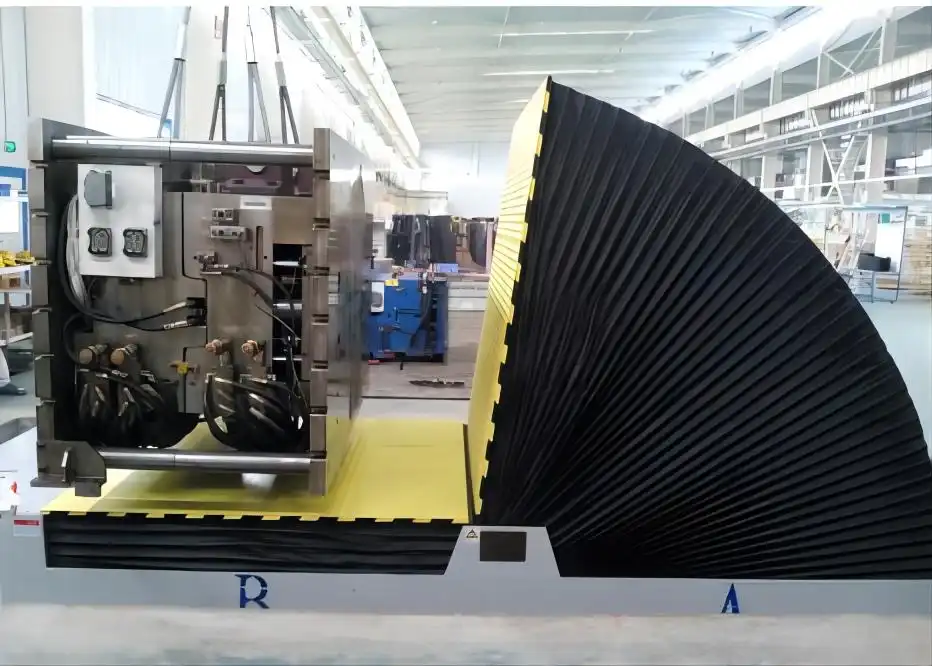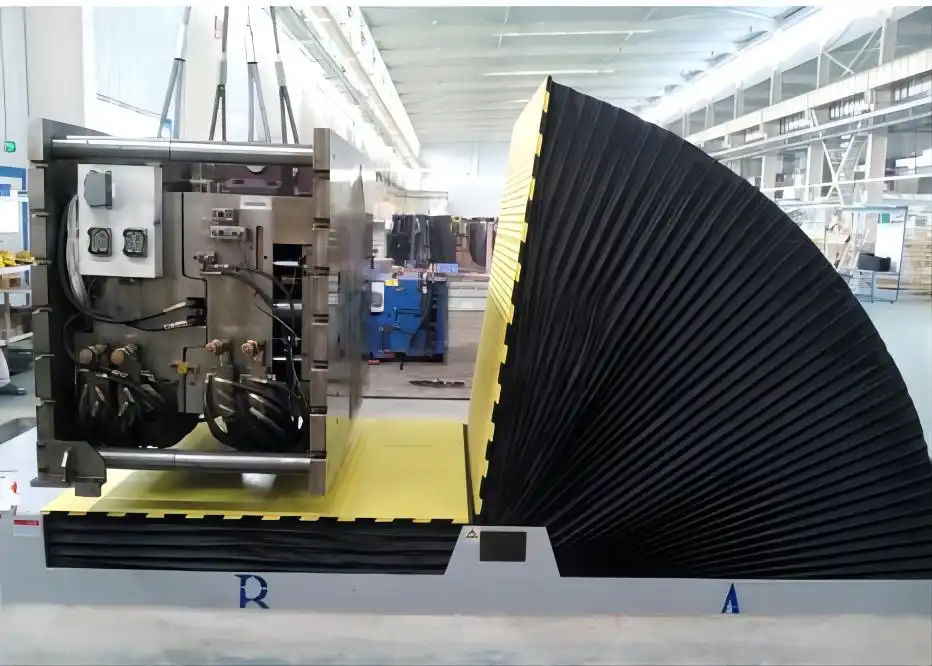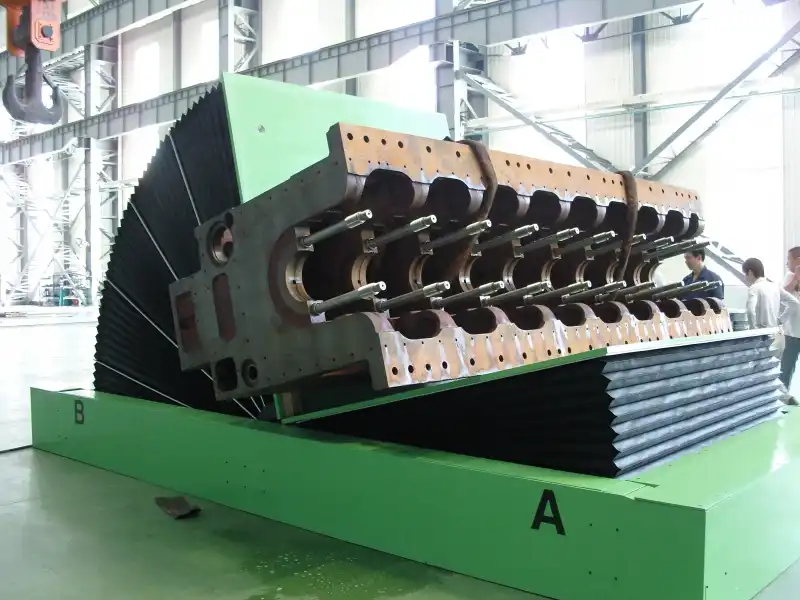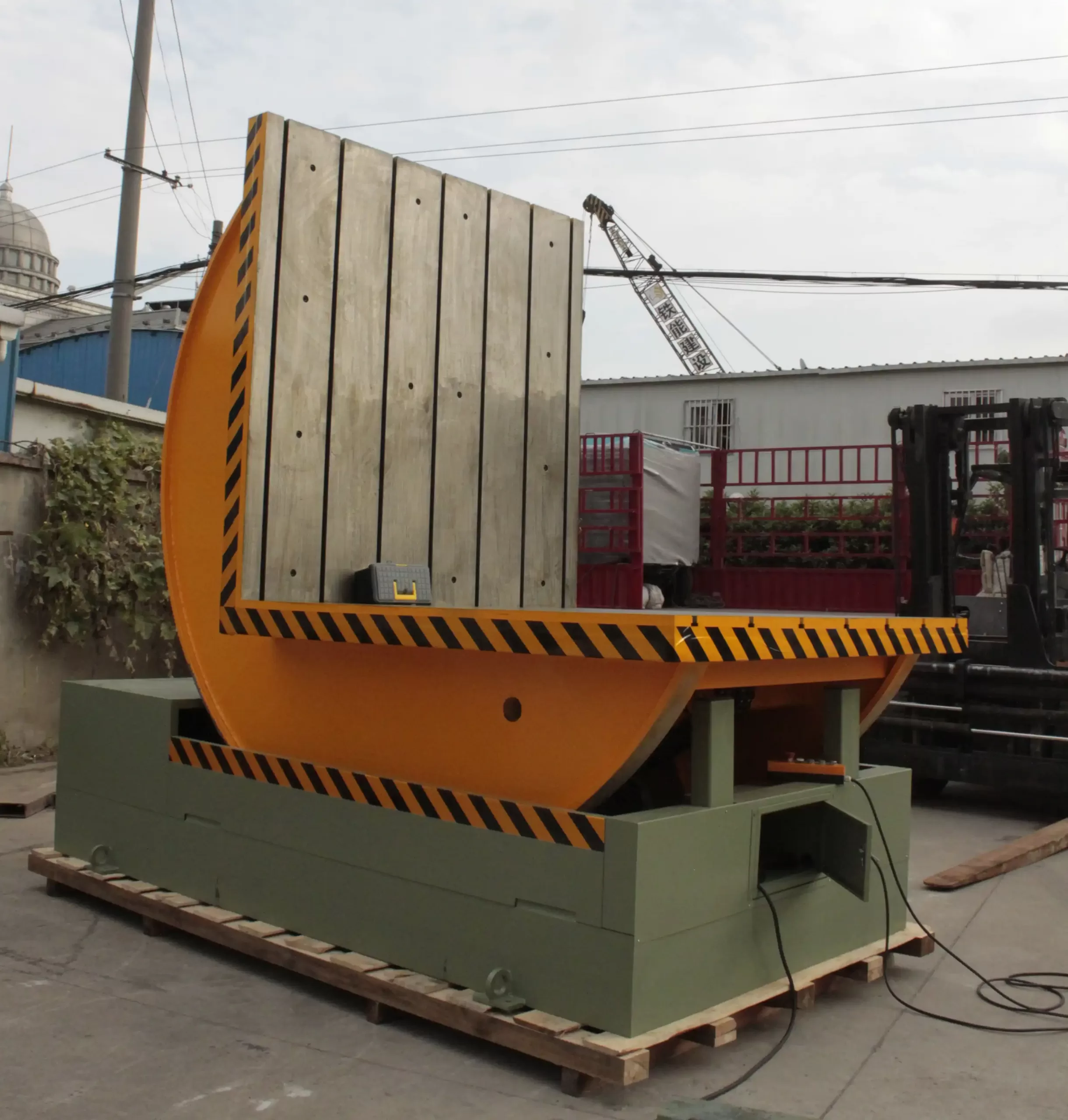Mold Flipper Investment Tips for Mexico Procurement Managers | Avoid Costly Downtime
Is your steel mill in Mexico struggling with aging equipment? Do long, unsafe mold changes frequently halt your production line? You watch the clock, knowing every minute of downtime bleeds profits and puts you a step behind your competitors. The pressure from rising energy costs and stricter government regulations only makes things worse. You know you need a change, but another massive capital investment feels risky without a guaranteed return. You need more than just a new machine; you need a solution that boosts efficiency, protects your workers, and secures your plant's future profitability.
The best investment tip for a mold flipper is to look beyond the initial price and evaluate the Total Cost of Ownership (TCO). This means you must consider installation, training, maintenance, spare parts availability, and the supplier's ability to provide long-term support in Mexico. A reliable machine from a true partner prevents costly downtime and delivers a much higher return on investment over its lifespan.

I understand the challenges you face. I started my journey as an engineer on the factory floor. I've seen firsthand how a single equipment failure can disrupt an entire operation. Now, as the founder of SHJLPACK, I've helped many plant owners like you, especially in the demanding steel industry, turn these challenges into opportunities. This isn't just about selling machinery. It's about sharing the knowledge I gained to help you make smart, strategic decisions. Let's walk through how to choose a mold flipper that becomes a pillar of your production stability, not another source of problems.
How can a mold flipper directly address my concerns about aging equipment and rising downtime?
Your production lines have run for over 15 years. You see the signs every day. The cranes are slow. The manual rigging for turning heavy molds is a major safety concern. Minor breakdowns are becoming more frequent, and each one stops production. You worry that a major failure is just a matter of time, which would be catastrophic for meeting your orders. A modern mold flipper is engineered specifically to solve this problem by replacing an old, inefficient process with a fast, safe, and reliable one.
A mold flipper directly reduces downtime by turning a multi-hour, high-risk manual operation into a safe, automated process that takes only a few minutes. This significantly increases your equipment's effective running time. It also protects your valuable molds from damage caused by crane mishandling, extending their life and preventing unexpected production stops.

Dive Deeper: From Hours of Risk to Minutes of Efficiency
Let's break down the real-world impact. The traditional method of flipping a heavy mold in a steel mill is a well-known bottleneck. It often involves overhead cranes, multiple workers, chains, and a lot of careful, slow maneuvering. This process is not just a time sink; it's a major source of operational risk.
The True Cost of the Old Way
The "cost" of your current method isn't just the wages of the workers involved. It includes the hidden and often larger costs of inefficiency and risk. First, there's the downtime. If a mold change takes two hours, that's two hours your production line is idle. For a high-capacity steel plant, that can translate to tens of thousands of dollars in lost output. Second, there's the risk of damaging the mold. A slight miscalculation with a crane can cause a mold to be dropped or hit, leading to cracks or deformations that require costly repairs or even complete replacement. Third, and most importantly, is the safety risk. Manually rigging and turning multi-ton molds is one of the most dangerous jobs on the factory floor. An accident can lead to serious injury, significant legal liability, and a devastating blow to team morale.
Measurable Gains with a Mold Flipper
A mold flipper, also known as a mold upender, is a purpose-built machine. It's designed to do one job perfectly: turn heavy objects 90 or 180 degrees. The benefits are immediate and measurable.
| Metric | Traditional Crane Method | Dedicated Mold Flipper Method | Impact on Your Goals |
|---|---|---|---|
| Time per Flip | 60 - 120 minutes | 3 - 5 minutes | Drastically increases uptime, helps achieve 95% target. |
| Labor Required | 2 - 3 workers | 1 operator | Reduces direct labor costs, frees up skilled workers for other tasks. |
| Safety Risk | High (crushing, dropping) | Very Low (automated, controlled) | Protects employees, reduces liability, improves insurance rates. |
| Mold Damage Risk | Moderate to High | Very Low | Extends the life of expensive molds, ensures consistent quality. |
| Process Control | Low (relies on operator skill) | High (consistent, repeatable) | Standardizes the process, making production more predictable. |
I remember a client in Monterrey whose facility was struggling with these exact issues. They saw mold changes as a necessary evil. After we installed a mold flipper, their general manager told me the biggest change wasn't just the time saved. It was the "peace of mind." He no longer had to worry every time a mold change was scheduled. That predictability is the foundation for hitting ambitious production targets.
You are a pragmatic leader. You analyze every major investment for its Return on Investment (ROI). The initial quote for a machine is just one number. You know the real cost is much more complex, especially when importing equipment into Mexico. You are concerned about unexpected fees, installation headaches, and long-term running costs that can turn a good investment into a financial drain. You need a complete picture to make a sound decision.
Beyond the purchase price, your ROI analysis must include shipping logistics, import duties and taxes in Mexico, on-site installation and commissioning costs, operator and maintenance training, and the long-term availability and cost of critical spare parts. Ignoring these factors can lead to an inaccurate ROI calculation and unexpected budget overruns.

Dive Deeper: Calculating the Total Cost of Ownership (TCO)
A true ROI calculation is based on the Total Cost of Ownership (TCO), not just the sticker price. As a fellow factory owner, I live by this principle. A cheaper machine that breaks down constantly is far more expensive in the long run. Let's look at the key "hidden" costs you need to build into your financial model for a mold flipper investment in Mexico.
Phase 1: Acquisition and Importation
This phase goes far beyond the supplier's quote.
- Shipping & Insurance: The cost to ship a heavy machine from China or Europe to a port like Manzanillo or Veracruz is significant. You need to factor in freight, insurance, and local transport from the port to your steel mill.
- Import Duties & Taxes: Mexico has specific tariffs and an IVA (Value Added Tax) on imported industrial machinery. A good supplier should help you with the correct HS Codes to ensure a smooth customs process, but the financial responsibility is yours. These taxes can add a substantial percentage to the initial cost.
- Customs Brokerage: You will need a reliable customs broker in Mexico to handle the paperwork. Their fees are another line item for your budget.
Phase 2: Installation and Integration
The machine arriving at your plant is not the end of the story.
- Foundation & Utilities: Does the mold flipper require a special concrete foundation or specific electrical/hydraulic hookups? The cost of this site preparation must be included.
- Installation & Commissioning: Will the supplier send engineers for installation, or is that your responsibility? The cost of labor, travel, and accommodation for their team is a real expense. Commissioning involves testing the machine with your actual molds to ensure it performs to specification.
- Training: Proper training is not a "nice to have"; it's essential for safety and efficiency. Your operators and maintenance staff need comprehensive training. This cost prevents expensive mistakes and downtime later.
Phase 3: Long-Term Operation
This is where many ROI calculations fall short.
- Spare Parts: How quickly can you get critical spare parts? If a sensor or hydraulic valve fails, waiting weeks for a part from overseas is unacceptable. A supplier with a plan for stocking parts locally or using internationally recognized brands (like Siemens, Schneider, Omron) that are available in Mexico is a huge advantage.
- Maintenance: What are the recommended preventive maintenance schedules? Factor in the cost of lubricants, filters, and the man-hours required for these tasks.
- Energy Consumption: This directly relates to one of your key challenges. The machine's power rating and efficiency will impact your factory's overall energy bill.
Here is a simplified TCO comparison to illustrate the point:
| Cost Component | Supplier A (Low Price) | Supplier B (Partner) | Notes |
|---|---|---|---|
| Purchase Price | $80,000 | $100,000 | Initial price difference. |
| Shipping & Duties | $15,000 | $15,000 | Assumed equal. |
| Installation Support | None (DIY) | $5,000 (On-site engineer) | DIY can lead to errors. |
| Training | Manual only | $2,000 (On-site training) | Proper training reduces errors. |
| Spare Parts (5 Yrs) | $10,000 (Proprietary, slow) | $4,000 (Standard, local) | Availability is key to uptime. |
| Downtime Cost (5 Yrs) | $50,000 (Est. 2 failures) | $5,000 (Est. minor issues) | The biggest hidden cost. |
| Total 5-Year TCO | $155,000 | $126,000 | The "cheaper" machine is more expensive. |
As you can see, the machine with the higher initial price can offer a significantly lower TCO. This is the kind of analysis that separates a simple procurement from a strategic investment.
Why is choosing a strategic partner more important than just a low-price supplier?
You are not just buying a piece of steel. You are investing in your plant's operational capacity for the next 15-20 years. You've learned from experience that the lowest bidder often creates the biggest long-term headaches. You need a partner who understands the steel industry in Mexico, a partner who can provide expert advice, and a partner who will be there to support you long after the machine is installed. You're looking for shared success, not just a transaction.
Choosing a strategic partner means you gain access to expertise in equipment selection, customization for your specific molds, seamless installation, and responsive long-term support. A low-price supplier sells you a machine; a partner invests in your success, helping you meet your goals for productivity, safety, and digital transformation, ensuring the equipment delivers value for its entire lifespan.

Dive Deeper: The Supplier vs. Partner Distinction
In my career, I've seen this play out time and time again. A factory buys a machine based on a price war, and a year later, they are calling us to help fix the problems. This is why at SHJLPACK, our mission is to be a knowledge-sharing platform and a total solution provider. We want to be your partner. Let's break down the tangible differences.
The Supplier Mindset
A company with a supplier mindset is focused on one thing: the sale.
- Consultation: They will offer you their standard models. They may not ask deep questions about your specific workflow, mold sizes, or long-term goals. The goal is to match your request to their existing catalog as quickly as possible.
- Customization: They will resist customization because it complicates their production and reduces their margin. You might be forced to adapt your process to their machine, rather than the machine being adapted to your process.
- After-Sales Support: Support is often a cost center for them. You might deal with a generic customer service line, slow response times, and a lack of technical depth. When a problem occurs, you feel like you're on your own.
The Partner Mindset
A strategic partner is invested in your outcome. Their success is tied to yours.
- Consultation: A partner starts by listening. They want to understand your challenges with energy costs, your goals for digitalization, and the specific types of molds you handle. They act as a consultant, using their expertise to recommend the right solution, not just any solution.
- Customization: They see customization as a way to provide value. Need a specific load capacity? A special table size? Integration with your existing conveyor system? They will work with your engineers to design a machine that fits perfectly into your workflow. This is how you maximize efficiency.
- After-Sales Support: Support is a core part of their offering. They provide comprehensive documentation, on-site training, and a clear channel for technical help. They understand that for a steel mill, downtime is critical. They have a plan for providing spare parts and technical guidance quickly. They might even offer advice on maintenance best practices or how to integrate the machine with your MES, supporting your broader goals.
| Feature | Low-Price Supplier | Strategic Partner (e.g., SHJLPACK) |
|---|---|---|
| Focus | The Transaction | The Relationship & Your Success |
| Approach | "Here is our product." | "Let's solve your problem." |
| Customization | Standard models only | Tailored to your exact needs |
| Support | Reactive, slow, impersonal | Proactive, fast, expert-led |
| Expertise | Sells a machine | Provides a total solution |
| Long-Term Value | Low initial cost, high TCO | Higher initial cost, lower TCO |
Choosing a partner is choosing peace of mind. It's knowing that you have an expert on your team who understands your industry and is committed to helping you succeed. This is the foundation upon which my company, SHJLPACK, was built.
How does a modern mold flipper support my goals for digitalization and MES integration?
You are a forward-thinking leader. You see digitalization not as a buzzword, but as a critical tool for survival and growth in the competitive steel industry. Your goal to deploy an MES, use IoT sensors, and analyze data is about achieving total production visibility. You might wonder how a seemingly simple machine like a mold flipper fits into this high-tech vision. You need every piece of new equipment to be a part of your digital ecosystem, not an isolated island.
A modern mold flipper supports digitalization with its integrated PLC controller, which can be equipped with sensors and communication protocols (like Profinet or Ethernet/IP) to connect directly to your plant's MES. This allows you to track cycle times, monitor operational status, count cycles for predictive maintenance, and integrate the mold-turning process into your overall digitized production schedule.

Dive Deeper: Making the Mold Flipper a Smart Machine
A mold flipper is no longer just a mechanical device. It is an intelligent node in your factory's network. When you're planning for a fully visualized production floor, every machine must be able to "talk." Here is how a modern mold flipper contributes to your digital transformation goals.
Data Points You Can Capture
A smart mold flipper is equipped with sensors that feed data to its PLC (Programmable Logic Controller). This data can then be sent to your central Manufacturing Execution System (MES).
- Cycle Count: The most basic but powerful data point. Counting how many times the machine has operated tells you exactly when to perform preventive maintenance. This is the foundation of moving from a reactive ("fix it when it breaks") to a predictive maintenance model.
- Operating Status: Is the machine idle, running, or in a fault state? Your MES can visualize this status on a digital twin of your factory floor, giving managers a real-time overview of all assets.
- Cycle Time: How long does each flip take? Consistent cycle times are a sign of a healthy machine. If the time starts to increase, it could indicate a hydraulic issue or mechanical wear, triggering a maintenance alert before a failure occurs.
- Fault Codes: If a problem does occur (e.g., a motor overload or a safety sensor trip), the PLC generates a specific fault code. This code can be sent directly to the maintenance team's tablets, telling them exactly what the problem is before they even arrive at the machine. This dramatically reduces troubleshooting time.
Integrating with Your MES for Intelligent Scheduling
Your goal of intelligent scheduling (智能排产) relies on accurate, real-time data. When your MES knows that Mold A will take exactly 4 minutes to be flipped and ready, it can schedule the subsequent production steps with much higher precision. The system knows the resource (the mold flipper) is available and for how long. This eliminates guesswork and optimizes the flow of materials through the plant, directly contributing to your goal of 95% equipment effective running time.
| Digital Feature | How It Works | Benefit for Your Steel Mill |
|---|---|---|
| PLC Control | Centralized brain of the machine. | Allows for automation, consistency, and communication. |
| HMI Interface | Touchscreen for operator control. | Simplifies operation, displays diagnostics and alerts. |
| Network Connectivity | Ethernet port communicates with MES. | Enables real-time data transfer and remote monitoring. |
| IoT Sensors | Motor current, pressure, position. | Provides raw data for predictive maintenance and analysis. |
By specifying these digital capabilities when you procure a mold flipper, you ensure that this investment not only solves a physical problem but also becomes a valuable data source for your larger digital strategy. It helps you transform your factory from a collection of machines into a single, cohesive, intelligent system.
What are the critical safety and maintenance features that ensure long-term stability?
Your ultimate goal is production stability. A new machine is useless if it's unreliable or unsafe. With equipment running constantly in a demanding steel mill environment, you need to be confident that your investment is built to last. You are looking for robust construction, fail-safe systems, and a clear maintenance plan that your team can follow. You want a machine that works flawlessly day after day, year after year, guaranteeing a return on your investment through uninterrupted operation.
To ensure long-term stability, a mold flipper must have critical features like a heavy-duty steel frame, a reliable hydraulic or electromechanical drive system with built-in safety valves, redundant limit switches, emergency stops, and a design that allows for easy access to all maintenance points. These features prevent failures, protect your workers, and make routine service simple and fast.
Dive Deeper: Engineering for Reliability and Safety
From my perspective as an engineer, the long-term value of a machine is determined by its design and construction quality. A machine that runs for 20 years isn't lucky; it's engineered to do so. Let's examine the essential features you should demand from any supplier.
Robust Mechanical and Structural Design
The foundation of reliability is the machine's physical build.
- Frame Construction: The frame should be made from heavy-gauge, high-strength structural steel (like Q235 or Q345), welded by certified professionals. All welds should be clean and inspected. A weak frame can flex under load, leading to premature wear on bearings and drive components.
- Drive System: The heart of the machine.
- Hydraulic: Look for a system that uses high-quality pumps, valves, and cylinders from reputable international brands (e.g., Parker, Rexroth). This ensures reliability and that replacement parts are available in Mexico. The system should include pressure relief valves to prevent overloads.
- Electromechanical: This system uses a powerful motor and a heavy-duty gearbox. It's often cleaner (no risk of oil leaks) and can be more energy-efficient. Again, demand high-quality, globally recognized brands for the motor and gearbox (e.g., SEW-Eurodrive, Siemens).
- Bearings and Pivot Points: All moving parts should use high-capacity, sealed bearings that can handle the immense forces involved. Pivot points must have grease fittings that are easily accessible for routine lubrication.
Fail-Safe Electrical and Control Systems
The machine's brain and nervous system must be just as tough as its body.
- Safety Interlocks: The machine should not operate if safety gates are open or if the mold is not positioned correctly. Proximity sensors and limit switches ensure every step happens in the correct sequence.
- Redundant Limit Switches: For critical functions like the end of the 90-degree turn, there should be two limit switches. If one fails, the other still stops the machine, preventing a catastrophic accident.
- Emergency Stops (E-Stops): E-stop buttons should be located in multiple, easily accessible locations around the machine. Pushing any of them should immediately and safely stop all machine motion.
- Overload Protection: Both hydraulic and electrical systems must have overload protection that automatically shuts the machine down if it tries to lift a weight beyond its capacity or if a motor is drawing too much current.
Maintenance-Friendly Design
A machine that is difficult to maintain will not be maintained properly.
- Accessibility: Your maintenance team should be able to easily access motors, gearboxes, hydraulic power packs, and lubrication points without having to disassemble half the machine.
- Clear Labeling: All electrical wires and hydraulic lines should be clearly labeled, corresponding to the schematics provided. This makes troubleshooting incredibly fast and easy.
- Simple Lubrication Schedule: The supplier should provide a clear chart showing what to lubricate, with what type of grease, and how often.
Here's a quick checklist for your procurement team:
| Feature Category | Must-Have Checklist Item |
|---|---|
| Mechanical | ✅ Heavy-duty, welded steel frame |
| ✅ High-quality hydraulic or electromechanical drive system | |
| ✅ Accessible and high-capacity bearings | |
| Electrical/Safety | ✅ Multiple, easily accessible E-Stops |
| ✅ Redundant limit switches for critical stops | |
| ✅ Motor and system overload protection | |
| Maintenance | ✅ Easy access to all service points |
| ✅ Clear labeling of all components | |
| ✅ Detailed maintenance manual and schedule |
By insisting on these features, you are investing in a machine's long-term health and the safety of your people. This is the path to achieving stable, predictable, and profitable production.
Conclusion
Investing in the right mold flipper is a strategic move. It enhances stability, guarantees safety, and boosts profitability in your plant, securing your competitive edge in the Mexican steel market.




